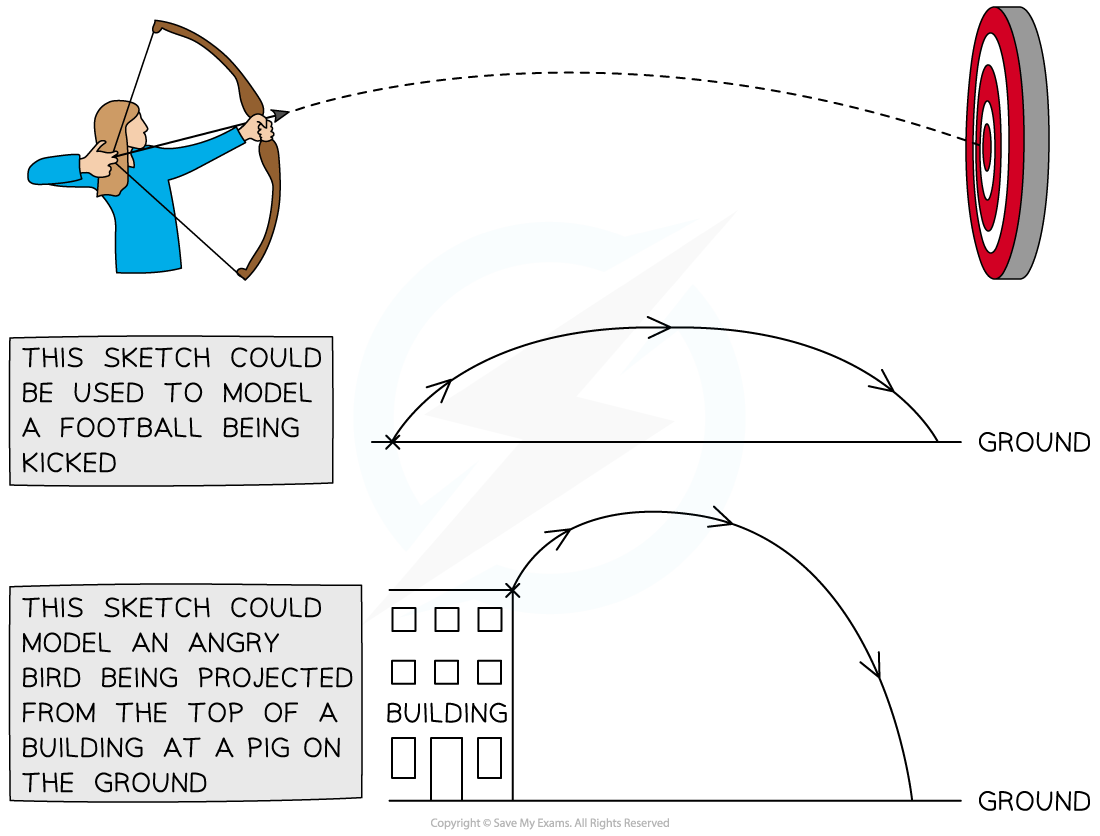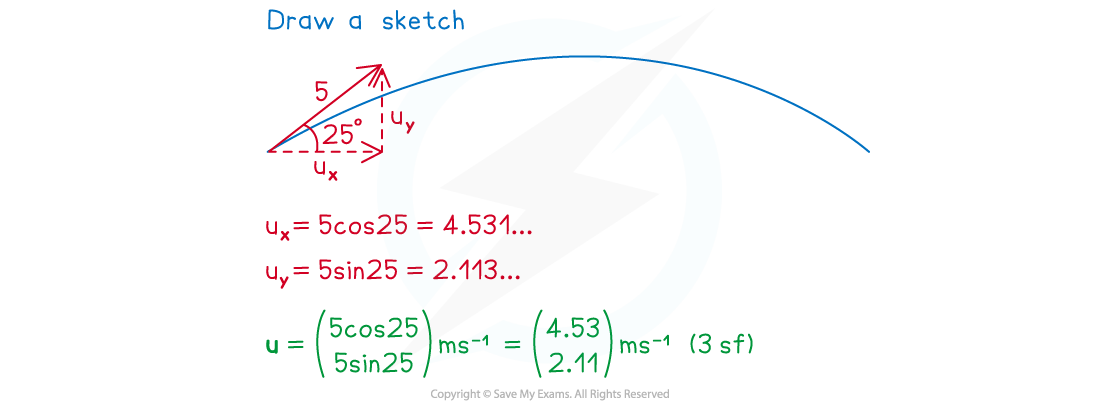- 翰林提供学术活动、国际课程、科研项目一站式留学背景提升服务!
- 400 888 0080
Edexcel A Level Maths: Mechanics:复习笔记2.6.1 Horizontal & Vertical Components
Horizontal & Vertical Components
What is a projectile?
- A projectile is a particle moving freely, under gravity, in a two-dimensional plane
- Examples of projectile motion include
- Sports such as basketball, javelin, archery, etc
- Computer games such as Angry Birds

Modelling assumptions with projectiles?
- The modelling assumptions with projectiles are
- No air resistance, no horizontal forces
- The projectile moves freely under gravity (no other vertical forces)
- Ignore spin and the rotation of the projectile
- Motion is symmetrical along the path of a parabola
What is the acceleration of a projectile?
- As it is 2D there will be a horizontal component to acceleration (ax)and a vertical component (ay)
- There will be no horizontal acceleration (ax = 0)
- No forces are acting horizontally
- Horizontal speed is constant
- There will be constant vertical acceleration (due to gravity, ay = ± g)
- ay may be positive or negative depending on which direction is taken as positive
- The acceleration can be written as 2D vector

What is the initial velocity of a projectile?
- As it is 2D there will be a horizontal component to the initial velocity(ux) and a vertical component (uy)
- A projectile is launched with initial speed U m s-1 at an angle θ to the horizontal
- If it is projected below the horizontal then θ would be negative
- Its initial velocity, u m s-1, is a vector with:
- horizontal component, ux = U cosθ
- vertical component, uy = U sinθ
- The initial velocity can have a positive or negative vertical component as an object can be projected upwards or downwards

Worked Example

A projectile is launched at an angle of 25° to the horizontal with speed 5 m s-1 .
Find the initial velocity, u m s-1 , of the projectile.

Exam Tip
- Sometimes they may give you the initial velocity as a vector already. To find the initial speed you would find the magnitude of the initial velocity and to find the angle of projection you could sketch a diagram and use trigonometry.
- The horizontal speed is always constant so there will never be a point during the motion when the speed of the object is zero. Its minimum speed will be at its maximum height when its vertical velocity is instantaneously zero.
转载自savemyexams


最新发布
© 2025. All Rights Reserved. 沪ICP备2023009024号-1








